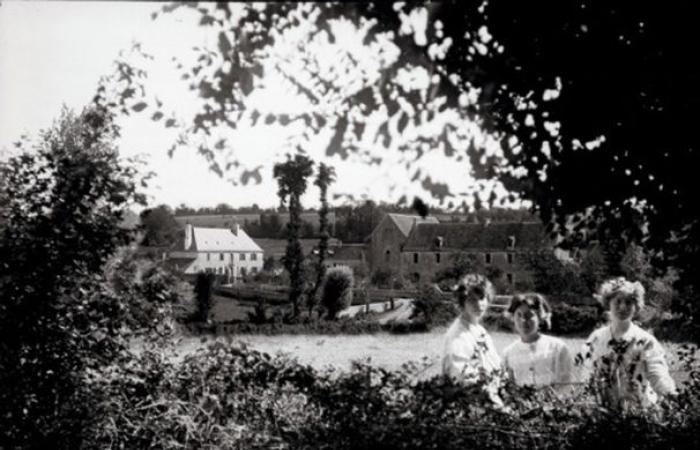The Ministry of Culture awarded the Maison des Illustres label to Varennes Abbey, in Fougerolles (Indre), where Jenny de Vasson lived and where she died on February 15, 1920, leaving behind a considerable photographic heritage.
If she did not demand that her heirs burn her photos, as she did for her writings, it is because Jenny de Vasson did not imagine that one day they would be exhibited. And one thing led to another, this abbey of Varennes where she had lived would become Maison des Illustres
– such as, among others, the residences of George Sand (1804-1876), Romain Rolland (1866 – 1944, Nobel Prize for Literature in 1915) or Jean-Henri Fabre (1823 -1915, humanist, naturalist, entomologist), which she knew. And Serge Gainsbourg’s Parisian apartment, smiles Gilles Wolkowitsch, owner of the place and descendant of the heirs of the Berry photographer. […] In the speech he gave on Friday, just before the unveiling of the plaque, he imagined what she could have said to him in this circumstance: “Put yourself in my place: you die unknown and wishing to remain that way
And then, one hundred and four years later, you find yourself in your garden with one hundred and twenty people who have come to tell you that you are famous. What an adventure ! “
Jenny de Vasson “did a real work”
It was in the 1980s that Gilles Wolkowitsch had the idea of showing a photographer friend the photos lying dormant in boxes in Varennes. “For us, they were pretty photos,” they remember. “Professionals recognized their great artistic quality. She created a real work.” To which several books have already been devoted.
La Châtre is preparing a tribute exhibition to Jenny de Vasson, a pioneer of photography
Aware of the importance of photography “as a technological revolution having an influence on people’s lives”, Jenny de Vasson, like her contemporaries, nevertheless did not consider it “as an art in its own right, in the same way such as drawing, painting or engraving. Among the thousands of photos that have reached us, there are views of Berry as well as of the many countries she visited.
Fougerolles occupies a good place there, underlined Mayor Arnaud Denormandie. “When the first book on Jenny de Vasson was published in 1980, many elderly residents of Fougerolles and neighboring towns recognized who their former neighbor, who their grandmother, who a former mayor of the village…”, he recalled, adding that thanks to his illustrious fellow citizen, “views of Fougerolles and not only of Varennes, portraits of many of its inhabitants have been exhibited in around twenty cities in France but also in New York, Washington and Santa Barbara. ” Not to mention the English, Greek, Spanish, Norwegian, Japanese and even Korean cultural sites that feature photos of Jenny de Vasson.
This summer, like every summer for fifty years, Varennes Abbey, which welcomes around 1,200 visitors per year, will be open to the public. But, warns Gilles Wolkowitsch, “there is no Jenny de Vasson museum, no exhibition”. Or at least, not yet.
Created in 2011, this label, awarded for five years, identifies places whose vocation is to preserve and transmit the memory of women and men who distinguished themselves in the political, social and cultural history of France.Martine Pesez






